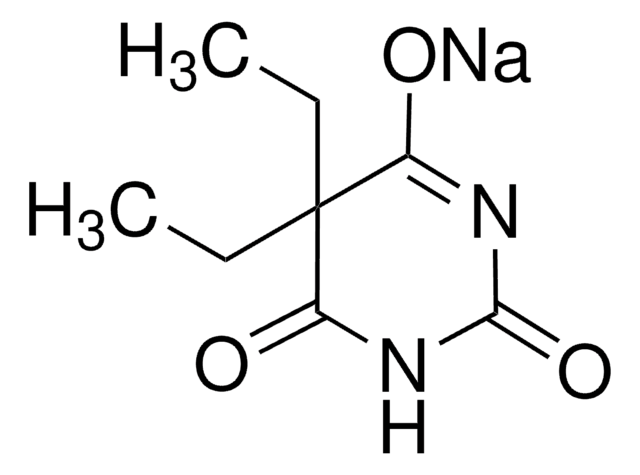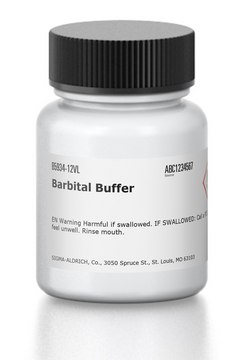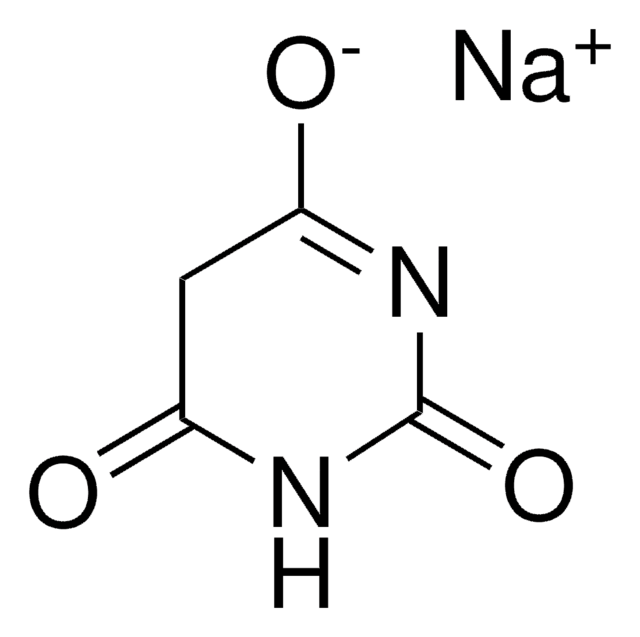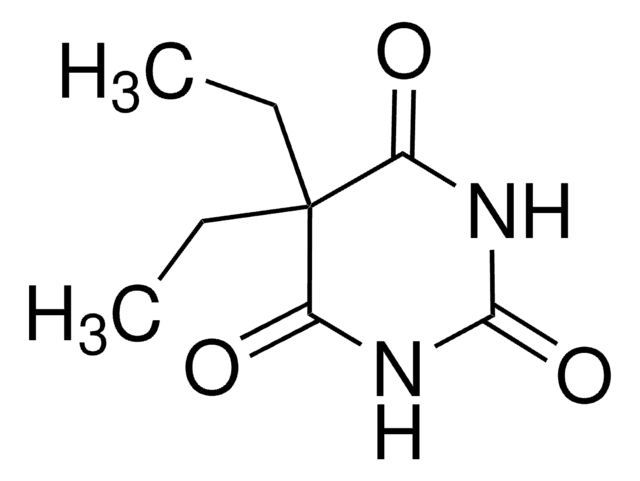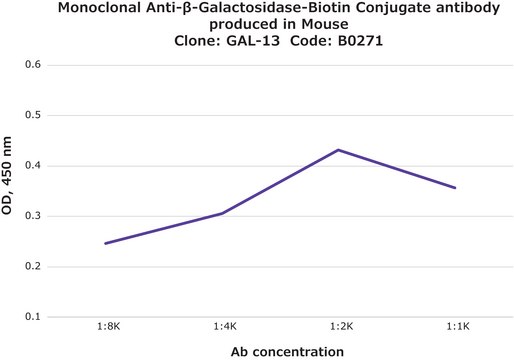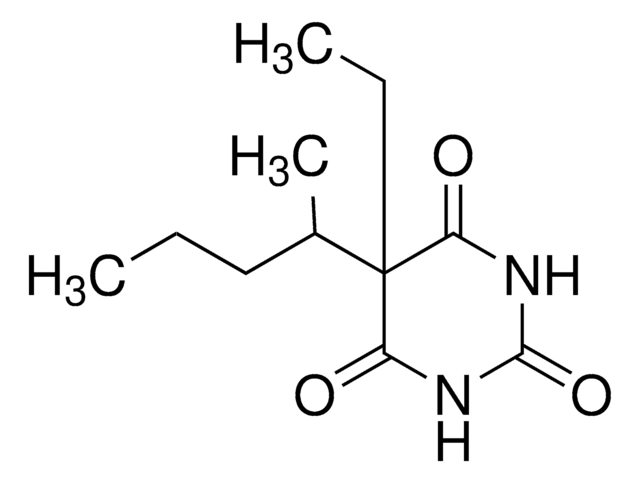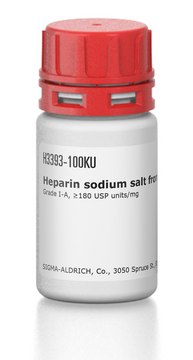B0375
Barbital
Synonym(s):
5,5-Diethyl-2,4,6(1H,3H,5H)-pyrimidinetrione, 5,5-Diethylbarbituric acid, Barbitone, Veronal
About This Item
Recommended Products
form
powder
Quality Level
drug control
USDEA Schedule IV; Home Office Schedule 3; psychotrope (France); kontrollierte Droge in Deutschland; regulated under CDSA - not available from Sigma-Aldrich Canada; psicótropo (Spain); Decreto Lei 15/93: Tabela IV (Portugal)
technique(s)
HPLC: suitable
gas chromatography (GC): suitable
application(s)
forensics and toxicology
pharmaceutical (small molecule)
veterinary
SMILES string
CCC1(CC)C(=O)NC(=O)NC1=O
InChI
1S/C8H12N2O3/c1-3-8(4-2)5(11)9-7(13)10-6(8)12/h3-4H2,1-2H3,(H2,9,10,11,12,13)
InChI key
FTOAOBMCPZCFFF-UHFFFAOYSA-N
Looking for similar products? Visit Product Comparison Guide
Application
<li><strong>Synthesis and characterization of some pyrimidine, purine, amino acid and mixed ligand complexes: </strong> This study explores the use of Barbital in the synthesis of various ligand complexes, highlighting its application in the development of life science reagents and pharmaceutical intermediates. This could inform R and D strategies for pharmaceutical manufacturing using Barbital as a key intermediate (Masoud et al., 2008).</li>
</ul>
Biochem/physiol Actions
Signal Word
Warning
Hazard Statements
Precautionary Statements
Hazard Classifications
Acute Tox. 4 Oral
Storage Class Code
11 - Combustible Solids
WGK
WGK 1
Flash Point(F)
Not applicable
Flash Point(C)
Not applicable
Personal Protective Equipment
Regulatory Information
Choose from one of the most recent versions:
Certificates of Analysis (COA)
Don't see the Right Version?
If you require a particular version, you can look up a specific certificate by the Lot or Batch number.
Already Own This Product?
Find documentation for the products that you have recently purchased in the Document Library.
Our team of scientists has experience in all areas of research including Life Science, Material Science, Chemical Synthesis, Chromatography, Analytical and many others.
Contact Technical Service